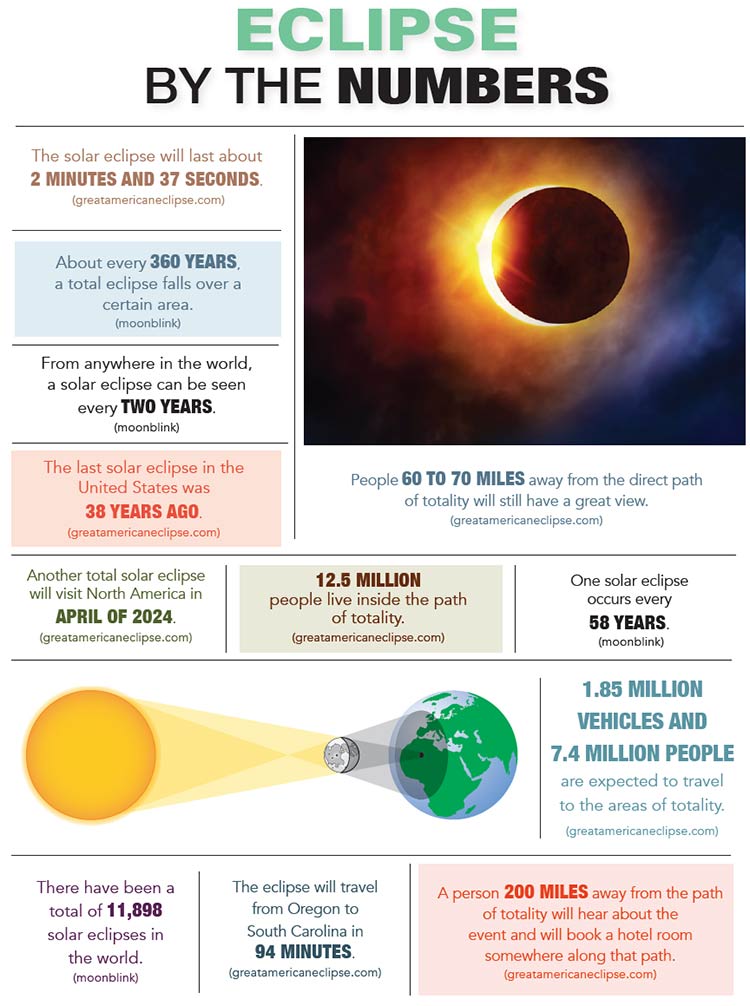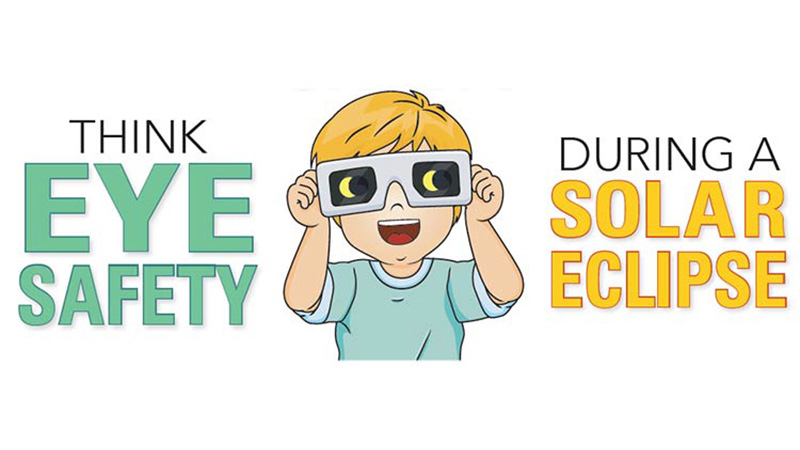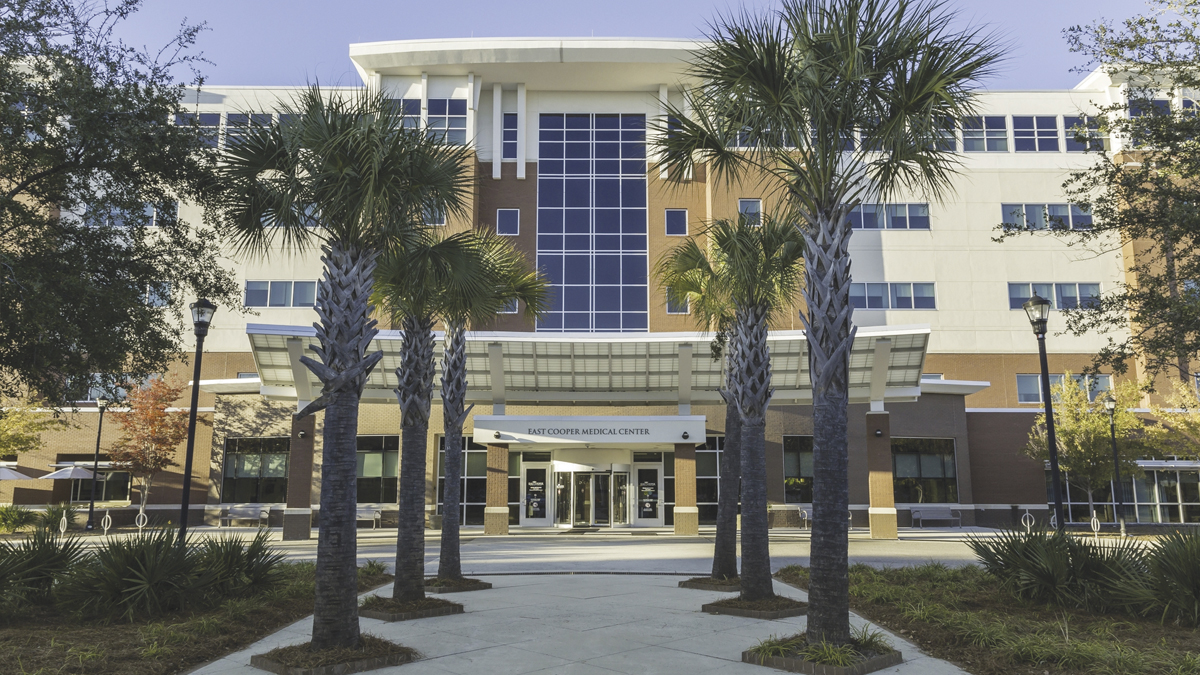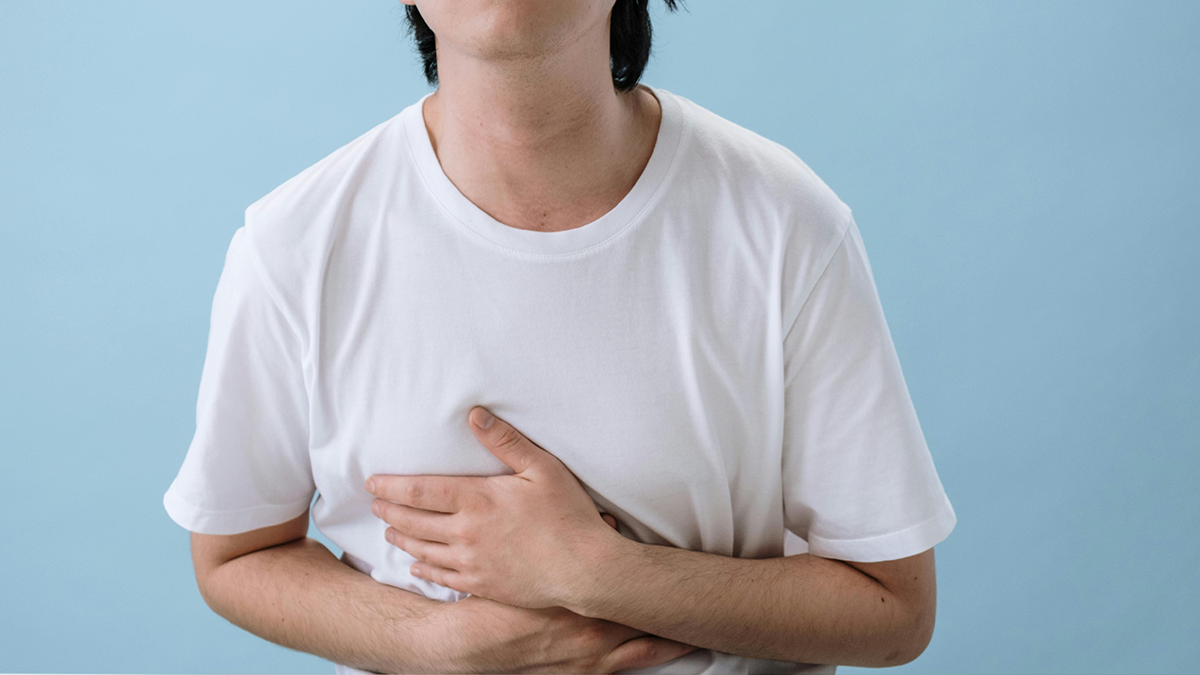At approximately 2:45 p.m. on Aug. 21, the Lowcountry will go dark for about two minutes when a total solar eclipse passes directly over coastal Carolina. Lots of viewing parties have been planned in the area – everything ranging from harbor tours to special yoga classes at the beach. School will be canceled that day, and everyone will be vying to get a glimpse of this rare occurrence. It’s a big deal because the last time South Carolina was in the path of totality for a solar eclipse was in 1970, according to eclipsewise.com, and the next one won’t be until 2052.
As the moon passes between the sun and the Earth, many people will be tempted to look up to view a spectacular event that only nature can provide – but, if you do, your eyes will need to be protected. We spoke to Dr. Katie Davis at Draisin Vision Group about the precautions that viewers should take. Looking at the sun is never a smart thing to do, but watching a total eclipse without proper protection could lead to permanent damage.
“Your eyes can be damaged from sun exposure, just like your skin,” Dr. Davis explained. “The moment you look directly at the sun, you begin to develop a sunburn on your eyeball. The cells on the front surface of your eye will blister and crack when overexposed to UV light – it’s a lot like a normal sunburn. Symptoms of this condition, known as photokeratitis, usually appear a few hours after the damage has occurred.”
Dr. Davis went on to explain that looking steadily at the sun will cause damage to the back of the eye – the retina – as well. Solar retinopathy, as the damage is known, may not be painful like photokeratitis, but the results are permanent. Staring at the sun can leave you partially blind.
“Basically, that black dot you see after a photo flash would just never go away,” she said.
Dr. Davis sited NASA as a good source for eye safety while viewing a solar eclipse. On its website at eclipse2017.nasa.gov, NASA warns that the only safe way to look directly at the partially eclipsed sun is through special-purpose solar filters or eclipse glasses. Once the moon is completely covering the sun, it will be safe to look directly at the sun. The site reads, “Homemade filters or ordinary sunglasses, even dark ones, are not safe for looking at the sun.”
NASA goes on to warn that people should not look at the partially eclipsed sun through an unfiltered camera, telescope, binoculars or other optical device.
“Remove your eclipse glasses only when the moon completely covers the sun’s bright face, and it suddenly gets quite dark. As soon as the bright sun begins to reappear, replace your solar viewer to glance at the remaining partial phases,” the NASA website reads.
“Our office will have solar eclipse glasses available, and we’ll be celebrating with an eclipse party,” Dr. Davis said. “Do not use regular sunglasses, binoculars or telescopes. Only eclipse-approved devices are safe.”
For more information on eye safety during the eclipse, visit https://eclipse2017.nasa.gov/safety. And for more information on Draisin Vision Group and their eclipse viewing party, call 843-556-2020. To order eclipse sunglasses, visit amazon.com.







